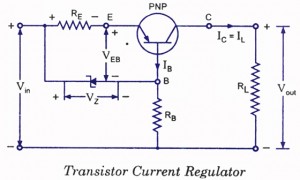I have designed a function generator with the intent to provide test signals to a microcontroller or ADC of some other device. However, I may forget that a year down the line and plug it into some circuit on my breadboard. What I'm worried about is damage from short circuits and high current draw. At the moment, there's a buffer OpAmp as the last output stage and the output is bipolar.
First of all, do I need to add an Rs or Zs (impedance match), for example of 50 Ohm? The output can go up to MHz. Does the buffer OpAmp suffice for that?
I have seen the following examples of short-circuit protection/current limiting. I'm not sure which apply to bipolar wave forms; it seems that some were for DC power supplies.
Which I first saw here. There were a couple variations given, one with a more complicated current mirror-type addition.
From the same post above in Olin Lathrop's answer, he mentions another config I've seen, which is an OpAmp feeding a MOSFET, which feeds back to its neg. terminal using a sensing resistor. I used something similar in a regulated power supply, but, again, that was DC and I'm not sure it applies here.
foldback supply (Overvoltage protection?)
I would like to avoid a fuse, since I read it's reaction is very slow, plus I don't want to replace it. :)
There's a lot of info on this topic and I feel underqualified to decide which is best for me. "Best" in this case is a simple design (like the transistor current regulator) that is robust enough to stop me from frying anything if some knucklehead (me) connects the two leads together. I'm OK with a little attenuation on my signal and a temporarily higher current as long as nothing's damaged. This is just a workbench tool, so the constraints are somewhat liberal. Maybe the buffer OpAmp's output stage can handle this, but I'm not sure.
One last thing: should I add diodes to the rails to protect against voltage spikes? Or would the current limiter also protect against that?
EDIT: The supply I'm using has a voltage regulator with current limiting, which can handle +/- 30mA. I don't know if that changes anything. It's a Mitsubishi M5290P and shown below:
Here's my output stage. OpAmps are STLM358N.
With just the 50Ohm Rs I get no distortion and a current draw of around 1mA.
UPDATE: I simulated the transistor current regulator with multiple values for the elements and it either had sharp edges in pole transitions or completely killed the signal.




